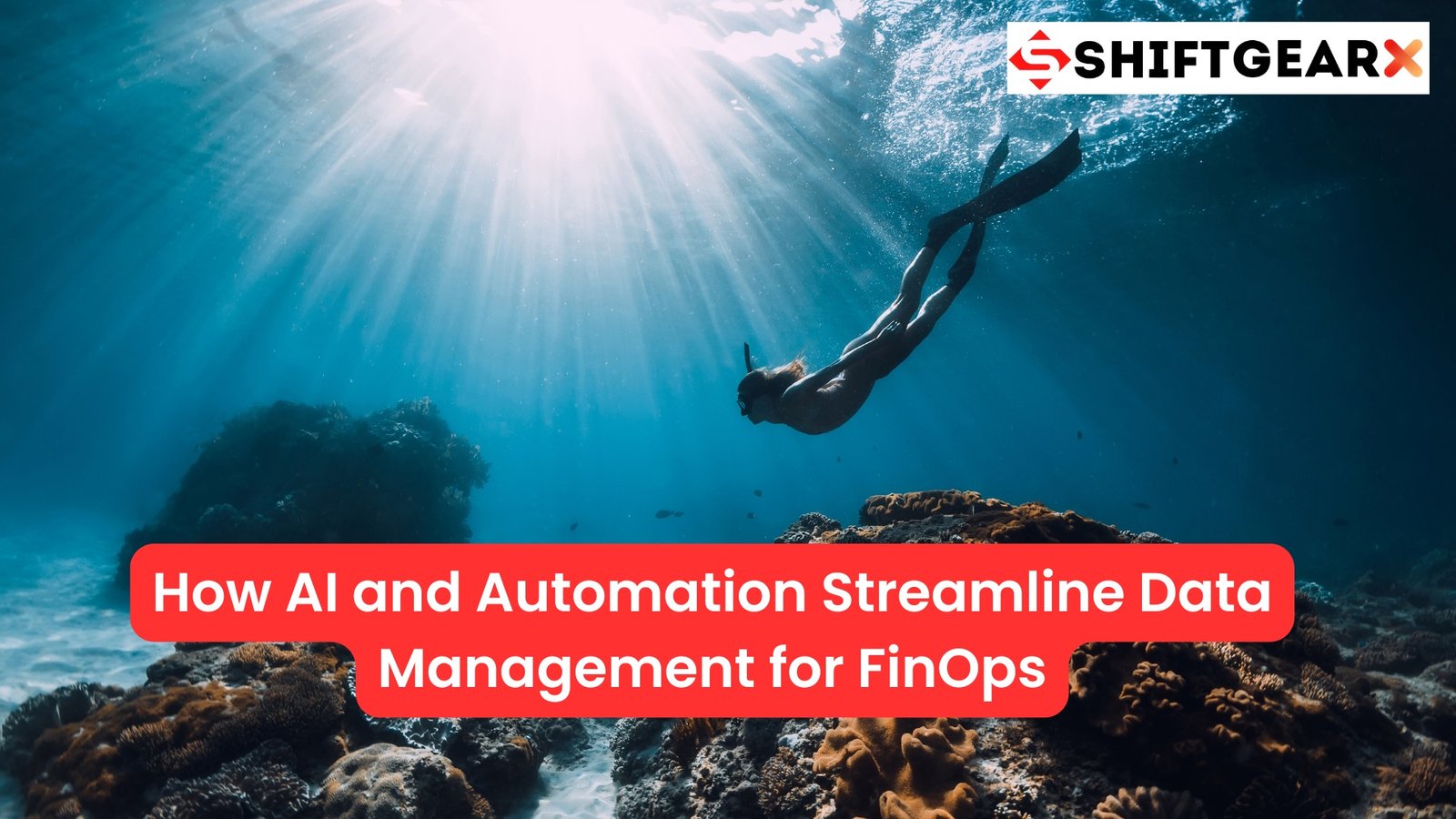Introduction
In the age of AI democratization, businesses must be aware of the threats it poses. The global Quantum AI market is expected to reach USD 1.8 billion by 2030. AI democratization refers to the widespread access and use of artificial intelligence technologies across various industries.
What is AI Democratization?
AI democratization means making artificial intelligence tools and technologies easy for everyone to use, not just the tech wizards. Imagine a world where small business owners, educators, and even hobbyists can harness the power of AI. That’s the goal here. This shift is all about breaking down the barriers that used to keep AI’s benefits locked away for a select few. Now, we’re seeing these powerful tools in the hands of many, sparking innovation and efficiency across the board. 9 out of 10 organizations support AI for a competitive advantage.
Think of it this way: in the past, only big tech companies with deep pockets and teams of engineers could dream of using AI to solve problems. Today, thanks to AI democratization, even a startup or a local bakery can use AI to understand customer preferences, optimize deliveries, or even create new recipes. This broad access to AI tools means that businesses can make smarter decisions faster, automate mundane tasks, and offer better services without breaking the bank.
This isn’t just about saving time or money
Though those are great benefits, it’s about leveling the playing field. With AI democratization, smaller players can compete with giants, fostering a more diverse and innovative marketplace. From automating customer service to analyzing market trends, AI tools can help businesses punch above their weight.
But it’s not all plug-and-play. While AI democratization opens up a world of possibilities, it also requires a new mindset. Businesses must learn to navigate these tools, understand their capabilities, and apply them in ways that align with their goals. This learning curve is part of the journey, pushing companies to evolve and adapt in a digital-first world.
In essence, AI democratization is a key that unlocks potential across industries. It invites everyone to the table, offering a chance to innovate, improve, and compete in ways that were unimaginable just a few years ago. And as we move forward, this trend will only continue to reshape how we work, create, and think about technology.

AI Adoption and Impact
| Statistic | Source |
|---|---|
| AI has the potential to deliver additional global economic activity of around $13 trillion by 2030. | McKinsey |
| By 2025, 75% of organizations will shift from piloting to operationalizing AI. | Gartner |
| The global AI market size is expected to reach USD 1.8 billion by 2030. | Pragmatic Coders |
| 9 out of 10 organizations support AI for a competitive advantage. | Authority Hacker |
| AI will contribute $15.7 trillion to the global economy by 2030. | Authority Hacker |
| Profits of companies with AI are expected to increase by 38%, generating over $14 trillion of additional profit by 2035. | Analyzing Alpha |
Is AI Democratization Needed?
Absolutely, AI democratization is not just a nice-to-have; it’s a must-have for staying ahead in the modern business world. It’s about giving every company, regardless of size or industry, the tools to innovate, streamline, and compete at a new level. AI will contribute $15.7 trillion to the global economy by 2030.
Why, you might ask? The answer is simple. The speed at which the digital landscape is evolving demands it. Companies need to process information faster, understand their customers better, and adapt quicker than ever before. AI democratization puts these capabilities into the hands of those who were previously locked out of the technology due to cost, complexity, or both.
Consider the impact on customer service alone. With AI, businesses can provide personalized experiences at scale, something that was unthinkable just a decade ago. This isn’t just about efficiency; it’s about deepening relationships with customers, understanding their needs on a new level, and anticipating their future demands.
Furthermore, data is now the lifeblood of decision-making.
AI democratization means that businesses can sift through this data, find patterns, and make informed decisions quicker. This isn’t just about having the right answers; it’s about asking the right questions. AI opens up new avenues of inquiry, pushing businesses to think differently about their strategies, products, and services.
Then there’s innovation. The democratization of AI empowers a broader range of businesses to experiment, create, and disrupt their sectors. It’s no longer just the tech giants that can build groundbreaking AI-driven solutions. Now, even a small startup can bring something revolutionary to the table, thanks to accessible AI technologies.
But let’s not forget the challenges.
Adopting AI isn’t about plugging in a new software package and watching it go. It requires a shift in mindset, an understanding of the technology, and a willingness to experiment and learn. This might sound daunting, but it’s also an opportunity. It’s a chance for businesses to grow, to improve their internal processes, and to foster a culture of continuous learning and innovation. Profits of companies with AI are expected to increase by 38%, generating over $14 trillion of additional profit by 2035.
In short, AI democratization is essential for businesses wanting to carve out a competitive edge in today’s fast-evolving digital landscape. It breaks down the barriers to entry, levels the playing field, and ignites a new era of innovation and growth. So, the question isn’t really whether AI democratization is needed. The question is, how quickly can businesses adapt and take full advantage of the opportunities it presents?
Where is AI Democratization needed?
Everywhere. That’s where AI democratization is needed. Let’s dive into why every industry, from healthcare to finance, and from education to agriculture, stands to benefit from spreading AI’s wings.
In healthcare, think about AI democratization enabling quicker diagnoses and personalized treatment plans. AI can analyze vast datasets of patient history and research faster than any human. This means doctors can offer targeted care, potentially saving more lives. For patients, it could mean less waiting and more certainty.
Financial services can use AI to detect fraud in real-time, a task too vast and complex for human eyes alone. Banks and financial institutions can protect your money more effectively. For consumers, this means fewer headaches and losses due to fraudulent activities. Imagine not having to dispute charges as often because AI caught them first.
Retail is another sector ripe for AI’s touch.
Personalized shopping experiences aren’t just nice; they’re expected now. AI democratization allows even small retailers to recommend products that you’re more likely to buy. This isn’t just about boosting sales; it’s about making your shopping experience smoother and more enjoyable.
In the realm of education, AI democratization can tailor learning experiences to individual student needs. No two students learn the same way, and AI can help identify the most effective teaching methods for each student. This could revolutionize education, making learning more accessible and effective for students everywhere.
Agriculture, often overlooked, stands to see tremendous benefits.
AI can predict weather patterns, monitor crop health, and even optimize planting and harvesting schedules. For the world, this means more efficient food production and potentially less hunger.

But, AI democratization isn’t just for the big players in these industries. It’s especially crucial for the smaller businesses, the startups, and the local enterprises. These are the organizations that, until now, couldn’t dream of leveraging such powerful technology. AI democratization gives them a seat at the table, allowing them to compete on a new level and bring fresh ideas and solutions to the forefront.
Sure, there are challenges. Every industry must approach AI with caution, ensuring ethical use and safeguarding privacy and security. But the potential benefits are too significant to ignore. AI democratization can bring efficiency, innovation, and a deeper understanding of customers and operations.
So, where is AI democratization needed? Everywhere. In every desk, farm, hospital, bank, school, and shop. The question isn’t if these industries need AI democratization, but how quickly they can embrace it and harness its full potential.
Unintended Consequences of AI Accessibility
Making AI accessible to everyone sounds like a win-win situation. But, let’s not ignore the flip side. As we open the floodgates of AI tools to the masses, we also invite a host of risks. These unintended consequences demand our attention and action.
First up, let’s talk about ethical dilemmas. With AI in more hands, the line between right and wrong can get blurry. Picture a scenario where AI is used to create deepfakes, spreading misinformation. The impact on public opinion and democracy can be profound. Ethical use of AI requires guidelines, but who sets them? And how do we enforce them?
Next, consider privacy concerns.
As businesses leverage AI to gather insights, the potential for overstepping boundaries skyrockets. Imagine a small business, new to the power of AI, unintentionally violating customer privacy. The backlash could be severe, not just legally but in lost customer trust. Navigating privacy in the age of AI democratization is like walking a tightrope. It requires a balance between leveraging data and respecting boundaries.
Then there’s bias. AI systems learn from data. If that data reflects biases, the AI’s decisions will too. This can perpetuate stereotypes and inequalities, affecting everything from job applications to loan approvals. Correcting AI bias is crucial but challenging. It requires ongoing vigilance and a commitment to fairness.
Cybersecurity is another giant hurdle.
As businesses of all sizes adopt AI, the surface for cyber attacks expands. Small businesses, in particular, may lack the resources to defend against sophisticated threats. A breach can be disastrous, costing not just money but also customer confidence. Strengthening cybersecurity in the context of AI democratization is not optional; it’s essential.
Lastly, there’s the risk of dependency. As we grow more reliant on AI for decision-making, we risk losing critical thinking skills. What happens when the AI is wrong? Can we recognize and correct the mistake? Maintaining a balance between AI assistance and human oversight is key.
AI democratization promises a world of benefits, but it’s not without its pitfalls. Recognizing these unintended consequences is the first step. The next? Taking proactive measures to mitigate the risks, ensuring that the journey towards AI accessibility is both innovative and responsible.
Unintended Consequences of AI Accessibility
| Threat | Considerations |
|---|---|
| Ethical Dilemmas | – Potential misuse of AI for creating deepfakes |
| – Impact on public opinion and democracy | |
| Privacy Concerns | – Risk of unintentional privacy violations |
| – Potential backlash and loss of trust | |
| Bias | – AI systems may perpetuate inequalities and stereotypes based on biased data |
| Cybersecurity | – Increased surface for cyber attacks as AI becomes more widespread |
| – Small businesses may lack resources to defend against sophisticated threats | |
| Dependency | – Risk of over-reliance on AI for decision-making |
| – Importance of maintaining a balance between AI assistance and human oversight |
Cybersecurity and Data Security
| Statistic | Source |
|---|---|
| 67% of business leaders believe that their cybersecurity risks are increasing. | Accenture |
| The average cost of a data breach is $3.86 million globally. | IBM Security |
| By 2025, the cybersecurity market is projected to be worth $300 billion. | MarketsandMarkets |
| 68% of business leaders feel their cybersecurity risks are increasing. | Accenture |
| 68% of business leaders feel their cybersecurity risks are increasing. | Accenture |
| 46% of organizations reported that their cybersecurity budgets increased in 2021. | Deloitte |
Data Security in an Era of Open AI
As AI technology spreads, so does the urgency for bulletproof data security. It’s critical for companies to step up their game in protecting against cyber threats and data breaches. In a world where AI tools are more widespread, safeguarding sensitive information is not just a best practice; it’s a necessity.
Think about it. With AI, the amount of data we collect and analyze has skyrocketed. This data often includes personal details about customers, proprietary business insights, and other sensitive information. If this data falls into the wrong hands, the consequences can be severe. We’re talking about financial loss, damage to reputation, and eroded customer trust.
So, what’s a business to do? First, understanding the specific risks associated with AI technology is crucial. AI systems are complex. They’re not only processing data at an unprecedented scale, but they’re also making decisions based on that data. This introduces unique vulnerabilities. For instance, if an AI system is tricked into processing malicious data, it could lead to flawed outcomes or expose sensitive information.
To counter these threats, businesses must employ advanced cybersecurity measures.
This might include encryption, to protect data at rest and in transit, and robust access controls, to ensure only authorized users can interact with the AI systems. Regular security audits and updates are also key to staying ahead of cybercriminals who are constantly evolving their tactics.
Another vital step is creating a culture of security awareness. Employees should be trained to recognize potential threats and understand the importance of data security practices. Remember, humans are often the weakest link in the security chain. Ensuring everyone is on the same page can significantly reduce the risk of breaches.
But there’s more to it than just defense. Companies also need to think about how they design their AI systems from the start. By adopting a principle of ‘security by design,’ businesses can ensure that their AI systems are built with security as a foundational element, not an afterthought. This involves integrating security considerations into every stage of the AI development process, from the initial design to deployment and beyond.
Collaboration is also key.
No business is an island, especially when it comes to data security in the age of AI. Sharing knowledge about threats and best practices with other organizations can help create a more secure environment for everyone. This includes participating in industry groups, attending security conferences, and even working with competitors on common security challenges.
Importantly, businesses must also navigate the regulatory landscape. As AI technology evolves, so do the laws and regulations governing its use. Staying compliant is not just about avoiding fines; it’s about demonstrating to customers that your business is serious about protecting their data. This requires staying informed about current and upcoming legislation and adjusting your data security practices accordingly.

Data Security in an Era of Open AI
| Threat | Considerations |
|---|---|
| Data Security | – Increased volume of data collected and analyzed with the proliferation of AI |
| – Potential consequences of data breaches, including financial loss and damage to reputation | |
| – Unique vulnerabilities introduced by AI systems, such as processing malicious data | |
| – Importance of advanced cybersecurity measures, including encryption and access controls | |
| – Need for a culture of security awareness among employees | |
| – Integration of security considerations into AI system design from the outset (security by design) | |
| – Collaboration and knowledge sharing among businesses to address common security challenges | |
| – Navigating regulatory requirements and staying compliant with evolving legislation |
The Talent Gap Widens
As AI democratization picks up pace, a new challenge emerges: a widening talent gap. The rush towards adopting AI technologies means that skilled professionals are in high demand. But here’s the rub – there aren’t enough of them to go around. This scarcity is pushing businesses to rethink their strategies for acquiring the necessary skills to harness the full potential of AI.
Why does this matter? For starters, AI is not a plug-and-play technology. It’s complex, multifaceted, and requires a deep understanding to leverage effectively. As more companies dive into the AI pool, the need for talent that can swim in these waters becomes critical. This includes data scientists, AI developers, and professionals who can ethically guide AI’s deployment. Without these skills, businesses risk falling behind in the race to innovate.
So, what can be done?
Training and upskilling the existing workforce is a solid starting point. Instead of competing in a fierce market for scarce talent, companies can invest in their current employees, teaching them the ropes of AI. This approach not only helps close the skills gap but also boosts employee engagement and retention. Imagine the morale boost when employees are given a chance to grow and take on exciting challenges within their current roles.
Moreover, partnerships with educational institutions can play a pivotal role. Collaborating on curriculum development, offering internships, and engaging in joint research projects can help ensure that the emerging workforce is equipped with the AI skills that businesses desperately need. This forward-thinking approach prepares the next generation to hit the ground running.
The Talent Gap in AI-related Fields
| Statistic | Source |
|---|---|
| By 2022, the AI skills gap will be the leading concern in organizations. | Gartner |
| By 2022, AI and machine learning jobs will be created in fields such as healthcare, energy, finance, and telecommunications. | Gartner |
| 64% of organizations struggle to hire AI talent. | Gartner |
| AI and machine learning are among the top emerging jobs on LinkedIn. | |
| The demand for AI skills has grown by 119% over the past three years. | |
| There is a 250% increase in demand for data scientists since 2013. |
But it’s not just about technical skills. Understanding the ethical implications of AI, data privacy concerns, and the importance of unbiased algorithms is crucial. Therefore, education should not only focus on the ‘how’ but also the ‘why’ of AI. Encouraging a culture of continuous learning and curiosity can guide businesses and their teams through the evolving AI landscape.
In essence…
bridging the talent gap requires a multipronged strategy. Investing in the current workforce, fostering educational partnerships, and emphasizing the ethical use of AI are keys to success. As we navigate the era of AI democratization, preparing our teams for the future is not just an option; it’s a necessity. With the right skills and mindset, businesses can unlock the full potential of AI, driving innovation and securing a competitive edge in the digital age.

| Threat | Considerations |
|---|---|
| Talent Gap | – Increasing demand for skilled professionals in AI-related roles as AI adoption accelerates |
| – Complexity of AI technology and the need for deep understanding to leverage it effectively | |
| – Risks of falling behind in innovation without access to skilled talent | |
| – Strategies for closing the talent gap, including training and upskilling the existing workforce and partnerships with educational institutions | |
| – Importance of not only technical skills but also understanding ethical implications and data privacy concerns | |
| – Fostering a culture of continuous learning and curiosity to navigate the evolving AI landscape |

For expert advice on navigating the risks and opportunities of AI and ML in your business, visit Shift Gear. You may also like this – Exploring the Controversy Around the Google Leak Reporting Tool – Information Technology Trends & Current News | Shift GearX
Reference: AI and ML Technology










